Fly Free, Chicky Boo was a post about our new pet who left us to fly free with its own kind: a flock of Rainbow Lorikeets. Suckers for the love of a bird, a week later, we went back to where we bought Faye and picked up her sister. The breeder gave us a $20 discount, which was nice of her. This one has been christened Sookie, after the character in the HBO series, True Blood. (We assume this bird is female.)
We are yet to get the big bird cage fixed, after the wind picked it up; but we do have a smaller cage for now

Our dog, Bella, is fascinated by this bird for all the wrong reasons: her toys make squeaky noises; so does the bird. And because the dog sleeps inside, we can’t have the bird inside in case she follows her natural dog instinct and attacks it. However, Bella adapts to most things our family does, and she likes who we like, so hopefully, she will grow to love Sookie too (for the right reasons!). Rainbow Lorikeets like fruit, nectar and some seeds. And when they poop, they squirt, so they are not an ideal indoor pet, not by a long (or short) poop shot. However, not being bird-seed eaters, they are less messy; therefore, there is less mould and they don’t attract mice because they don’t drop birdseeds. We’ve decided that seeing these birds love to socialise with one another–so much so that they will fly away from the hand that feeds them–we are going to get another one in February, 2014.
By then, Men-Who-Fix-Bird-Cages-Be-Willing, the cage will be secured in a sunny corner of the yard, the especially-bought concrete pavers will be underneath it (they stop mice from burrowing in) and the bird(s) can live in there instead of in the small cage out on the deck.
Birds are not the most ideal pets for people sensitive to chemicals, especially people with mould sensitivities. Their cages need to be cleaned almost daily so as to keep the area mould free: A handheld vacuum cleaner, some vinegar in a spray bottle, and a change of paper towels (as opposed to newspaper, which releases petrochemical fumes from the news print) is all that’s needed for a small cage. Food needs to be fresh each day and not left out overnight (mice = the need for Ratsack). We use a plastic tablecloth pegged on to cover up at night so as to keep the rain out.
As for the big outdoor cage, I’ll let you know how that works out when I work it out. When I was back in the city, the bird cage, which had no sun in winter, turned into mouldy mess that, by the time I left, I couldn’t go into. The burden of cleaning it fell onto my daughter; luckily, she loves birds. Since she was a spring chicken herself, she has had pet birds: wild birds that needed ‘saving’, budgies, canaries, cockatiels and African Ringnecks. The big cage was a 10th birthday gift from me to her. But from that time until now, her love, appreciation and fascination for birds has infiltrated the core of my being. This love, which, after our family of cockatiels flew away, left us both bereft and lonesome.
In memory of our ‘lost’ family:

And to celebrate the new:


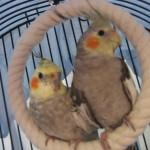
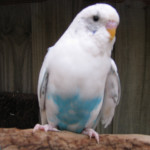
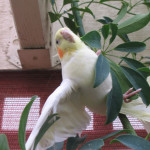
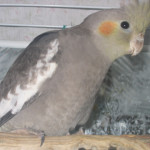
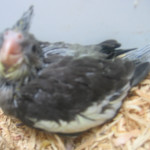
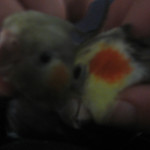
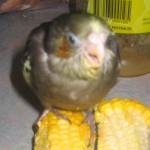
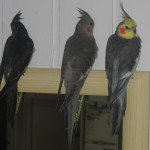

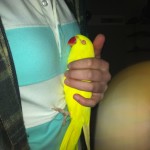
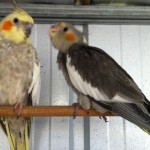

Leave a Reply